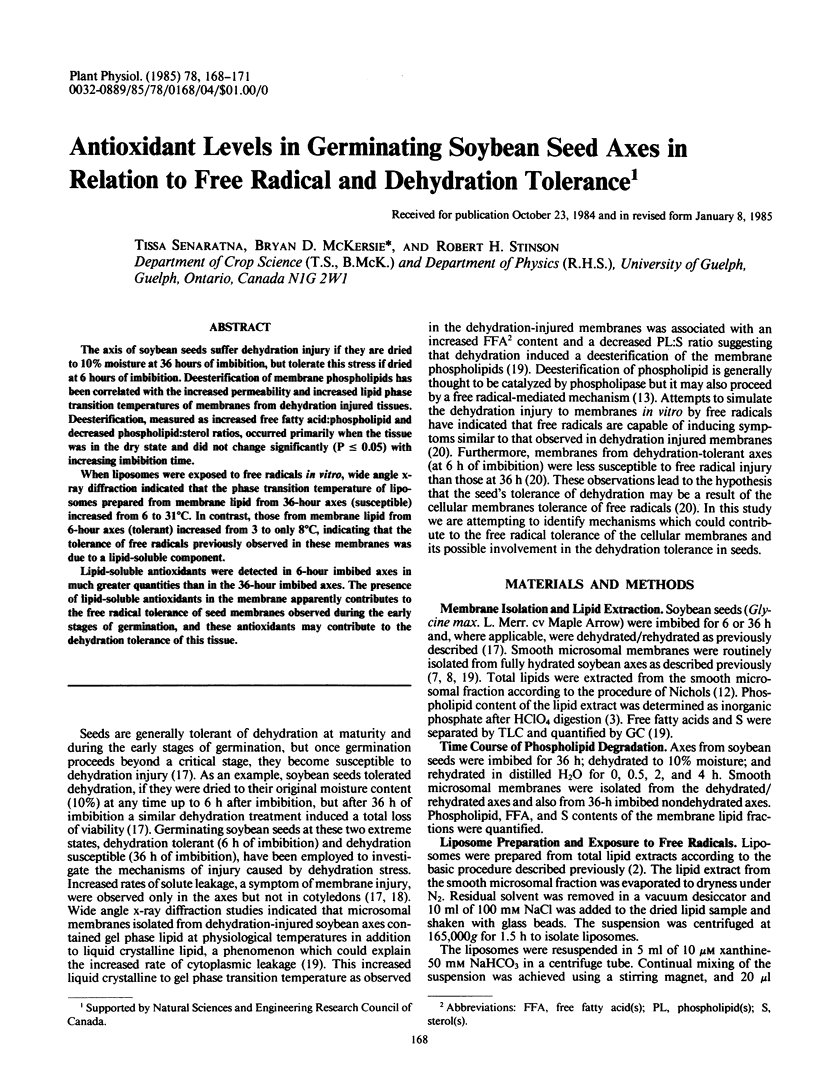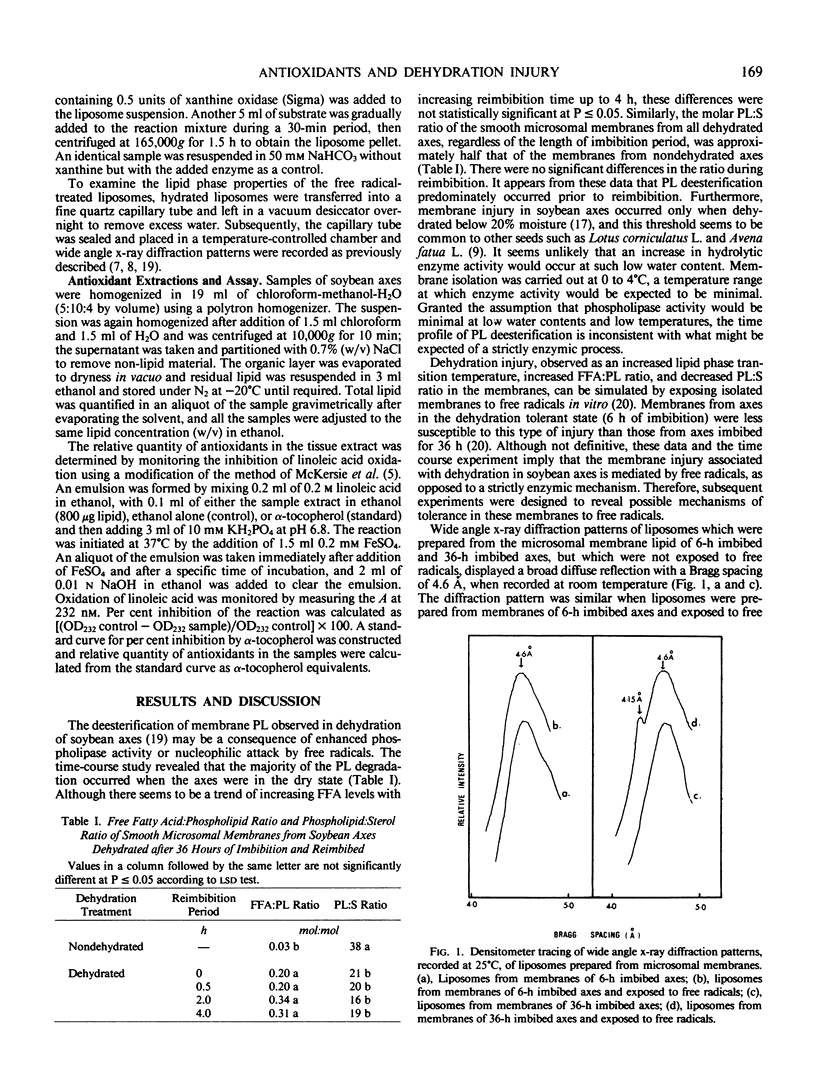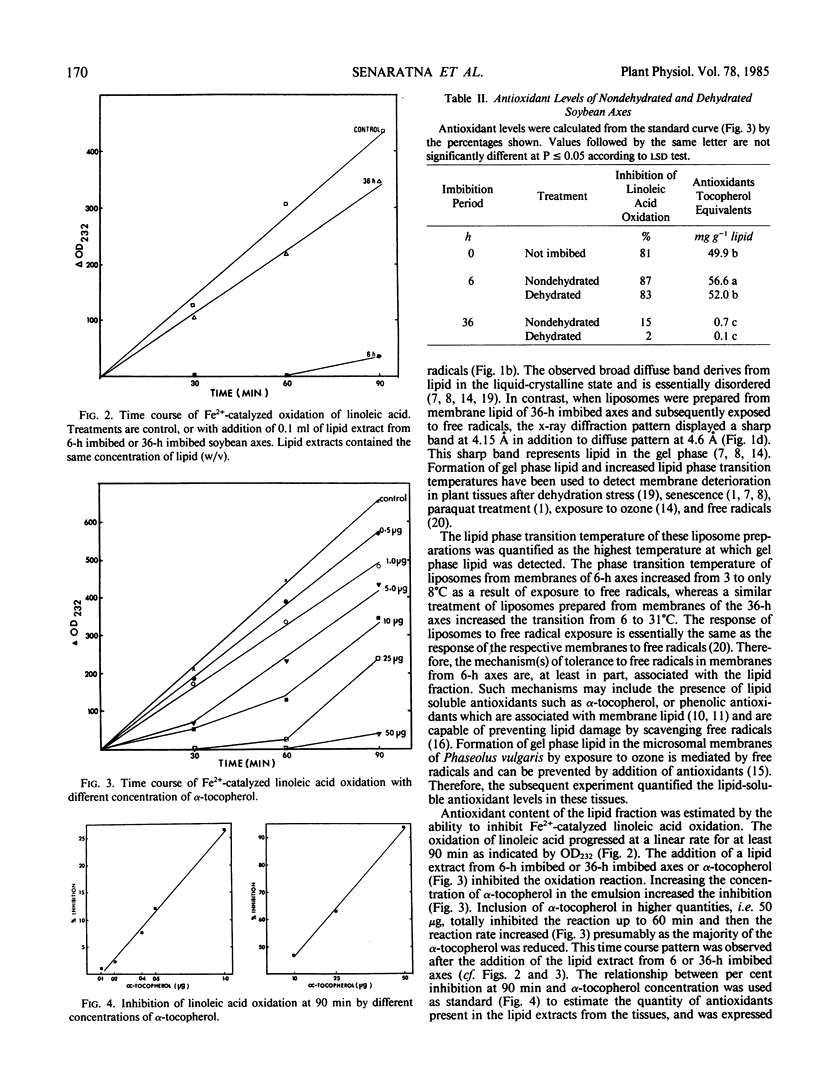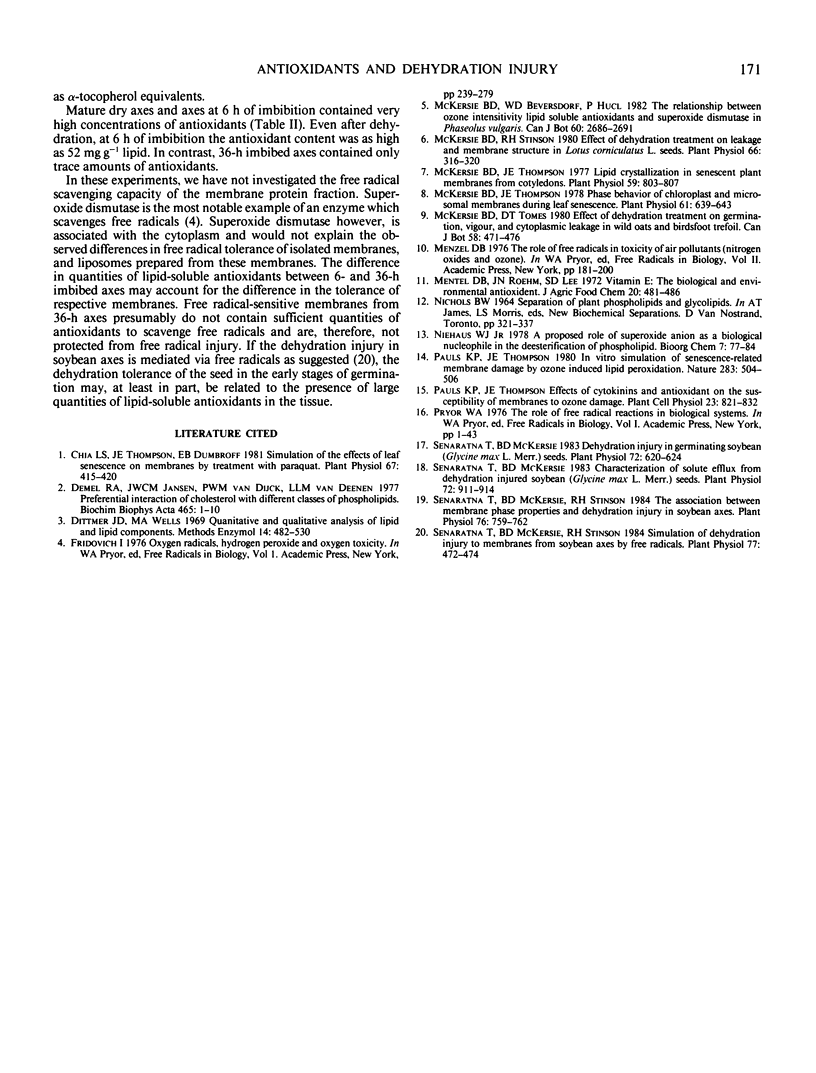Abstract
The axis of soybean seeds suffer dehydration injury if they are dried to 10% moisture at 36 hours of imbibition, but tolerate this stress if dried at 6 hours of imbibition. Deesterification of membrane phospholipids has been correlated with the increased permeability and increased lipid phase transition temperatures of membranes from dehydration injured tissues. Deesterification, measured as increased free fatty acid:phospholipid and decreased phospholipid:sterol ratios, occurred primarily when the tissue was in the dry state and did not change significantly (P ≤ 0.05) with increasing imbibition time.
When liposomes were exposed to free radicals in vitro, wide angle x-ray diffraction indicated that the phase transition temperature of liposomes prepared from membrane lipid from 36-hour axes (susceptible) increased from 6 to 31°C. In contrast, those from membrane lipid from 6-hour axes (tolerant) increased from 3 to only 8°C, indicating that the tolerance of free radicals previously observed in these membranes was due to a lipid-soluble component.
Lipid-soluble antioxidants were detected in 6-hour imbided axes in much greater quantities than in the 36-hour imbibed axes. The presence of lipid-soluble antioxidants in the membrane apparently contributes to the free radical tolerance of seed membranes observed during the early stages of germination, and these antioxidants may contribute to the dehydration tolerance of this tissue.
Full text
PDF



Selected References
These references are in PubMed. This may not be the complete list of references from this article.
- Chia L. S., Thompson J. E., Dumbroff E. B. Simulation of the effects of leaf senescence on membranes by treatment with paraquat. Plant Physiol. 1981 Mar;67(3):415–420. doi: 10.1104/pp.67.3.415. [DOI] [PMC free article] [PubMed] [Google Scholar]
- Demel R. A., Jansen J. W., van Dijck P. W., van Deenen L. L. The preferential interaction of cholesterol with different classes of phospholipids. Biochim Biophys Acta. 1977 Feb 14;465(1):1–10. doi: 10.1016/0005-2736(77)90350-9. [DOI] [PubMed] [Google Scholar]
- McKersie B. D., Stinson R. H. Effect of Dehydration on Leakage and Membrane Structure in Lotus corniculatus L. Seeds. Plant Physiol. 1980 Aug;66(2):316–320. doi: 10.1104/pp.66.2.316. [DOI] [PMC free article] [PubMed] [Google Scholar]
- McKersie B. D., Thompson J. E. Lipid crystallization in senescent membranes from cotyledons. Plant Physiol. 1977 May;59(5):803–807. doi: 10.1104/pp.59.5.803. [DOI] [PMC free article] [PubMed] [Google Scholar]
- McKersie B. D., Thompson J. E. Phase Behavior of Chloroplast and Microsomal Membranes during Leaf Senescence. Plant Physiol. 1978 Apr;61(4):639–643. doi: 10.1104/pp.61.4.639. [DOI] [PMC free article] [PubMed] [Google Scholar]
- Menzel D. B., Roehm J. N., Lee S. D. Vitamin E: the biological and environmental antioxidant. J Agric Food Chem. 1972 May-Jun;20(3):481–486. doi: 10.1021/jf60181a039. [DOI] [PubMed] [Google Scholar]
- Pauls K. P., Thompson J. E. In vitro simulation of senescence-related membrane damage by ozone-induced lipid peroxidation. Nature. 1980 Jan 31;283(5746):504–506. doi: 10.1038/283504a0. [DOI] [PubMed] [Google Scholar]
- Senaratna T., McKersie B. D. Characterization of Solute Efflux from Dehydration Injured Soybean (Glycine max L. Merr) Seeds. Plant Physiol. 1983 Aug;72(4):911–914. doi: 10.1104/pp.72.4.911. [DOI] [PMC free article] [PubMed] [Google Scholar]
- Senaratna T., McKersie B. D. Dehydration Injury in Germinating Soybean (Glycine max L. Merr.) Seeds. Plant Physiol. 1983 Jul;72(3):620–624. doi: 10.1104/pp.72.3.620. [DOI] [PMC free article] [PubMed] [Google Scholar]
- Senaratna T., McKersie B. D., Stinson R. H. Association between Membrane Phase Properties and Dehydration Injury in Soybean Axes. Plant Physiol. 1984 Nov;76(3):759–762. doi: 10.1104/pp.76.3.759. [DOI] [PMC free article] [PubMed] [Google Scholar]
- Senaratna T., McKersie B. D., Stinson R. H. Simulation of dehydration injury to membranes from soybean axes by free radicals. Plant Physiol. 1985 Feb;77(2):472–474. doi: 10.1104/pp.77.2.472. [DOI] [PMC free article] [PubMed] [Google Scholar]


